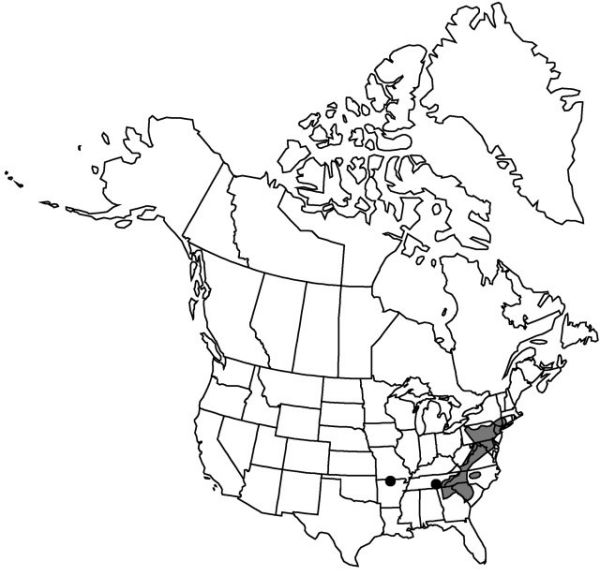Melanthium latifolium
in J. Lamarck et al., Encycl. 4: 25. 1797.
Rhizomes 0.5–1.5 × 0.5–1 cm; bulbs 0.6–1.7 cm. Stems 1/4–1/2 floriferous, 0.5–1.6 m. Leaf blades narrowly oblanceolate, 25–55 × 1–7.2 cm, apex acute. Inflorescences 1.7–7 dm; terminal racemes 0.4–3.9 dm; secondary racemes spreading to ascending, 0.7–1.8(–2) dm; tertiary racemes common; bracts ovate to subulate, green to purplish brown, 2–6 mm, densely floccose proximally and marginally. Tepals greenish white to light yellow, aging green, orbiculate to rhombic, 3–8 × 2–4.8 mm, base abruptly attenuate, clawed, margins strongly undulate, basal 2/5 linear, involute, apex shortly acuminate; claws 0.3–6.9 mm; glands yellow, oblong to oblong-ovate, nectariferous; stamens 4–5.5 mm; filaments inserted at or below middle of claw, 0.4–1 mm from ovary base, not basally dilated, equaling tepal width at insertion point; anthers 0.7 mm; ovary ovoid, glabrous or pubescent; styles 1.7–3 mm; pedicel spreading to ascending, 7–17 mm. Capsules ellipsoid-oblong, 12–19 × 7–12 mm, glabrous or glabrate. Seeds 7.5–9 × 4–4.5 mm (including wings). 2n = 16.
Phenology: Flowering summer.
Habitat: Mesic to dry, rocky, wooded slopes
Elevation: 300–1700 m
Distribution

Ark., Conn., Del., D.C., Ga., Md., N.J., N.Y., N.C., Pa., S.C., Tenn., Va., W.Va.
Discussion
Traditionally, Melanthium latifolium has been known by the misapplied name M. hybridum Walter (N. L. Bodkin 1979).
Selected References
None.